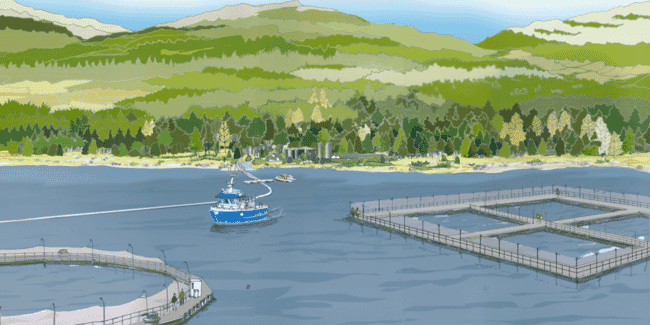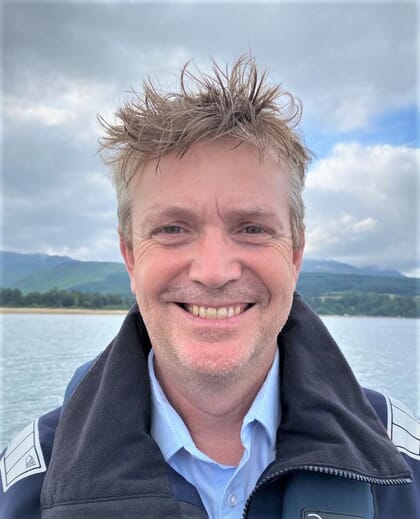
Loch Long Salmon had hoped to be the first company in Scotland to use semi-closed containment pens © Loch Long Salmon
Developers behind plans to bring a proven, transformative aquaculture technology to Scotland for the first time have described the decision as a “missed opportunity” after their proposals were rejected by the Board of the Loch Lomond & Trossachs National Park.
The Park Board voted to reject Loch Long Salmon’s plans for a semi-closed containment salmon farm on Loch Long despite the project being supported by the closest community council; national bodies such as SEPA and NatureScot; and a cross-party group of Councillors, MSPs and the local MP.
James Stuart, convener of the Lock Lomond and Trossachs National Park Authority said, “it is our view that such a nationally important landscape is not the appropriate location to host development of such an industrial scale and where the risk of an escape of farmed fish could impact on designated water courses.”
"The semi-closed containment systems proposed – whilst noted as a substantial step forward for the industry – have not yet been trialled in Scotland and there is not a sound body of evidence on which to base decision making," Stuart continued.
"There is a clear risk that the technology may not be sufficiently successful," he concluded.
Semi-closed containment aquaculture limits pollution from farm activities and creates a barrier between wild and farmed fish. The technology also been endorsed by environmental groups such as the Atlantic Salmon Trust, the Scottish Wildlife Trust and the Sustainable Inshore Fisheries Trust.

Semi-closed containment solutions have been successfully trialled in other salmon farming sites
From the surface a semi-closed containment site looks like a traditional salmon farm, but underneath the water, the net is surrounded by an impermeable membrane, with water drawn up and circulated from deeper in the Loch.
This removes the threat of sea lice and attacks by seals, meaning it won’t ever use sea lice treatments or acoustic devices that can harm dolphins or other cetaceans. Hundreds of cycles of this technology in other countries have proven the efficacy of the solution, as well as showing no escapes, addressing a further and legitimate concern around the aquaculture sector.
Commenting after the decision, Stewart Hawthorn, managing director of Loch Long Salmon, said:
“The National Park Board have missed an opportunity to sensitively use the natural resources within the park to support local communities and fulfil their mission to improve the wider environment beyond the borders of the Park.”
“In doing so they have gone against the wishes of the community, expert advisers, national regulators and a cross-party group of elected officials.”
“There are a range of options available to us to continue our efforts to bring the benefits of semi-closed containment aquaculture to Loch Long. We will explore those options carefully over the coming days and weeks before deciding on the next steps.”




